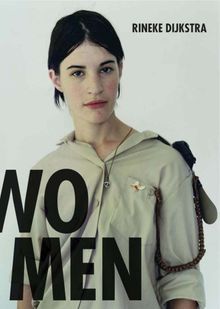| |||||||||||||||||||||||||
CURATOR INDEX
|
|
STATUS: Out of print | 00/00/00 For assistance locating a copy, please see our list of recommended out of print specialists |
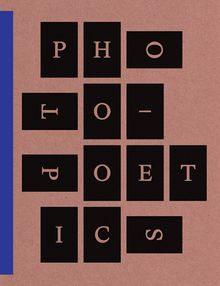 Photo-Poetics
Photo-Poetics
An Anthology
Published by Guggenheim Museum Publications.
Foreword by Richard Armstrong. Introduction, text and afterword by Jennifer Blessing.
This catalogue presents an important new trend in contemporary photography, offering an opportunity to define the concerns of a younger generation of artists and contextualize them within the history of art and culture. Drawing on the legacies of conceptual and commercial photography, these artists pursue a largely studio-based approach to still-life photography that centers on the representation of objects, often printed matter such as books, magazines and record covers. The result is images imbued with poetic and evocative personal significance--a sort of displaced self-portraiture--that resonate with larger cultural and historical meanings.
Driven by a deep interest in the medium of photography, these artists investigate the nature, laws and magic of film photography at the moment of its disappearance in our digital age. They attempt to rematerialize the photograph through meticulous printing, using film and other disappearing photo technologies, and by creating photo-sculptures and installations.
Artists include Claudia Angelmaier, Erica Baum, Anne Collier, Moyra Davey, Leslie Hewitt, Elad Lassry, Lisa Oppenheim, Erin Shirreff, Kathrin Sonntag and Sara VanDerBeek.
PUBLISHER
Guggenheim Museum Publications
BOOK FORMAT
Flexi, 7.75 x 10.25 in. / 148 pgs / 135 color.
PUBLISHING STATUS
Pub Date 10/27/2015
Active
DISTRIBUTION
D.A.P. Exclusive
Catalog: FALL 2015 p. 28
PRODUCT DETAILS
ISBN 9780892075218 TRADE
List Price: $50.00 CAD $67.50 GBP £40.00
AVAILABILITY
In stock
in stock $50.00 Free Shipping UPS GROUND IN THE CONTINENTAL U.S. |
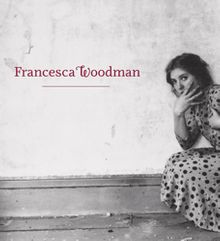 Francesca Woodman
Francesca Woodman
Published by D.A.P..
Edited by Corey Keller. Text by Julia Bryan-Wilson, Jennifer Blessing.
Published with San Francisco Museum of Modern Art.
Artists who arrive fully formed at a young age always dazzle, and Francesca Woodman was one of the most gifted and dazzling artist prodigies in recent history. In 1972, the 13-year-old Woodman made a black-and-white photograph of herself sitting at the far end of a sofa in her home in Boulder, Colorado. Her face is obscured by her hair, light radiates from an unseen source behind her out at the viewer through her right hand. This photograph typifies much of what would characterize Woodman's work to come: a semi-obscured female form merging with or flailing against a somewhat bare and often dilapidated interior. In an oeuvre of around 800 photographs made in just nine years, Woodman performed her own body against the textures of wallpaper, door frame, baths and couches, radically extending the Surrealist photography of Man Ray, Hans Bellmer and Claude Cahun and creating a mood and language all her own. In the 30 years since her untimely death, Woodman has gained a following among successive generations of artists and photographers, a testament to her work's undeniable immediacy and enduring appeal Amid a renewed intensification of interest in Francesca Woodman, this volume is published for a major touring exhibition of her photographs and films at the San Francisco Museum of Modern Art and the Guggenheim. Containing many previously unpublished photographs, it is the definitive Francesca Woodman monograph.
Francesca Woodman (1958-1981) was born in Denver, Colorado, to the well-known artists George and Betty Woodman. In 1975 she attended the Rhode Island School of Design, and in 1979 she moved to New York, to attempt to build a career in photography. In 1981, at the age of 22, she committed suicide.
PUBLISHER
D.A.P.
BOOK FORMAT
Clth, 9.25 x 10.75 in. / 224 pgs / 13 color / 18 bw / 144 duotone.
PUBLISHING STATUS
Pub Date 3/31/2013
Out of stock indefinitely
DISTRIBUTION
D.A.P. Exclusive
Catalog: SPRING 2013 p. 85
PRODUCT DETAILS
ISBN 9781935202660 TRADE
List Price: $55.00 CAD $72.50
AVAILABILITY
Not available
STATUS: Out of stock indefinitely. |
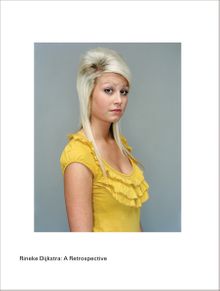 Rineke Dijkstra: A Retrospective
Rineke Dijkstra: A Retrospective
Published by Guggenheim Museum Publications.
Text by Jennifer Blessing, Sandra S. Phillips. Interview by Jan van Adrichem.
Rineke Dijkstra came to prominence in the 1990s with her celebrated Beach Portraits, large-scale color photographs of children on the verge of adolescence posed on beaches around the world, from South Carolina to the Ukraine. From that point on, her sensitive and visually riveting portraits have documented individuals caught in transitional states, sometimes due to physical exertion, for example after giving birth or dancing, or charted over time through series. Along with other Western European photographers such as Thomas Struth and Thomas Ruff, Dijkstra has been a leading innovator in the production of large-scale color images, which came to define contemporary photography in the 1990s and have transformed it ever since.
PUBLISHER
Guggenheim Museum Publications
BOOK FORMAT
Hardcover, 9 x 12 in. / 264 pgs / 170 color.
PUBLISHING STATUS
Pub Date 3/31/2012
Out of print
DISTRIBUTION
D.A.P. Exclusive
Catalog: SPRING 2012 p. 4
PRODUCT DETAILS
ISBN 9780892074242 TRADE
List Price: $55.00 CAD $65.00
AVAILABILITY
Not available
STATUS: Out of print | 00/00/00 For assistance locating a copy, please see our list of recommended out of print specialists |
 Haunted: Contemporary Photography, Video, Performance
Haunted: Contemporary Photography, Video, Performance
Published by Guggenheim Museum Publications.
Edited by Jennifer Blessing, Nat Trotman. Text by Jennifer Blessing, Peggy Phelan, Lisa Saltzman, Nancy Spector, Nat Trotman.
PUBLISHER
Guggenheim Museum Publications
BOOK FORMAT
Hardcover, 9 x 11 in. / 208 pgs / 160 color.
PUBLISHING STATUS
Pub Date 3/31/2010
Out of stock indefinitely
DISTRIBUTION
D.A.P. Exclusive
Catalog: SPRING 2010 p. 30
PRODUCT DETAILS
ISBN 9780892073986 TRADE
List Price: $50.00 CAD $67.50 GBP £45.00
AVAILABILITY
Not available
STATUS: Out of stock indefinitely. |
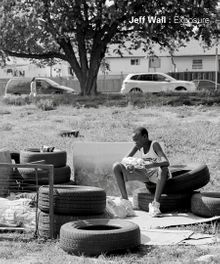 Jeff Wall: Exposure
Jeff Wall: Exposure
Published by Guggenheim Museum Publications.
Text by Jennifer Blessing, Katrin Blum.
PUBLISHER
Guggenheim Museum Publications
BOOK FORMAT
Paperback, 10 x 12 in. / 60 pgs / 36 color.
PUBLISHING STATUS
Pub Date 2/1/2008
Out of print
DISTRIBUTION
D.A.P. Exclusive
Catalog: SPRING 2008 p. 94
PRODUCT DETAILS
ISBN 9780892073696 TRADE
List Price: $40.00 CAD $50.00
AVAILABILITY
Not available
STATUS: Out of print | 5/18/2011 For assistance locating a copy, please see our list of recommended out of print specialists |
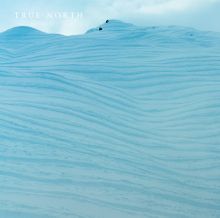 True North
True North
Published by Guggenheim Museum Publications.
Text by Rebecca Solnit, Jennifer Blessing.
PUBLISHER
Guggenheim Museum Publications
BOOK FORMAT
Hardback, 10 x 10 in. / 71 pgs / 23 color.
PUBLISHING STATUS
Pub Date 4/1/2008
Out of print
DISTRIBUTION
D.A.P. Exclusive
Catalog: SPRING 2008 p. 109
PRODUCT DETAILS
ISBN 9780892073702 TRADE
List Price: $45.00 CAD $55.00
AVAILABILITY
Not available
STATUS: Out of print | 00/00/00 For assistance locating a copy, please see our list of recommended out of print specialists |
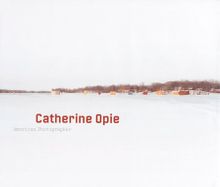 Catherine Opie: American Photographer
Catherine Opie: American Photographer
Published by Guggenheim Museum Publications.
Text by Dorothy Allison, Jennifer Blessing, Russell Ferguson, Nat Trotman.
Catherine Opie was born in Ohio in 1961 and is currently Professor of Photography at UCLA. Opie's work has been exhibited extensively throughout the United States, Europe and Japan. She has had solo exhibitions of her work at the Walker Art Center, Minneapolis; St. Louis Art Museum; Museum of Contemporary Art, Chicago; and the Museum of Contemporary Art, Los Angeles, among many others.
PUBLISHER
Guggenheim Museum Publications
BOOK FORMAT
Hardback, 12.25 x 10.25 in. / 288 pgs / 272 color.
PUBLISHING STATUS
Pub Date 10/1/2008
Out of print
DISTRIBUTION
D.A.P. Exclusive
Catalog: FALL 2008 p. 95
PRODUCT DETAILS
ISBN 9780892073757 TRADE
List Price: $65.00 CAD $75.00
AVAILABILITY
Not available
STATUS: Out of print | 00/00/00 For assistance locating a copy, please see our list of recommended out of print specialists |
